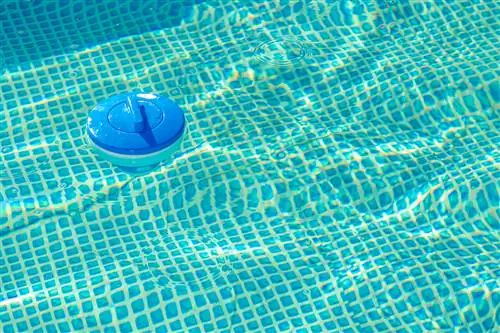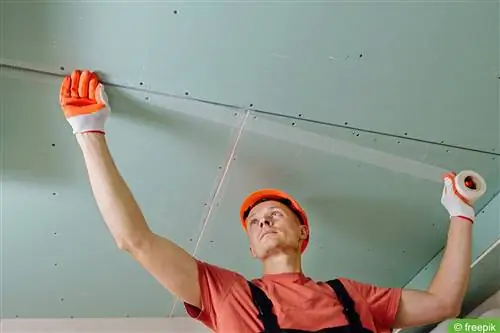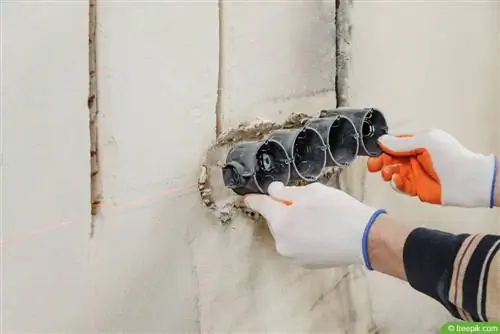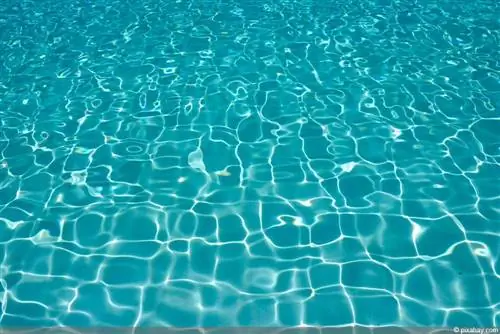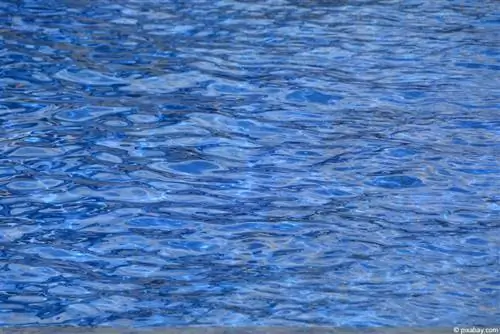- Author admin [email protected].
- Public 2023-12-17 03:39.
- Last modified 2025-01-24 12:45.
When the pool is about to be filled for the first time, the question of initial chlorination also arises. When and how is it carried out and what dosage is correct. This guide shows how to proceed step by step.
Time
The swimming season is about to start and the pool will be filled for the first time. It is important to first clean all elements and check the filter for functionality. The initial chlorination only takes place when the pool is completely full.
Suitable Medium
For initial chlorination, chlorine is available in various dosage forms and concentrations. Common ones are:
- liquid solution
- Gas
- Granules
- Powder
- Tablets
Liquid chlorine and gas are used much less frequently in private pools than the solid versions. There are also differences in the type of preparation for use. Some agents can be added directly to the water or into the skimmer of the pump. For others it is necessary to dissolve them beforehand and distribute them in liquid form. As with the dosage, the manufacturer's instructions must be followed, which can vary greatly. There are products where one tablet is sufficient for 30,000 liters (30 cubic meters) of water or even just 10,000 liters. The same applies to all other forms.
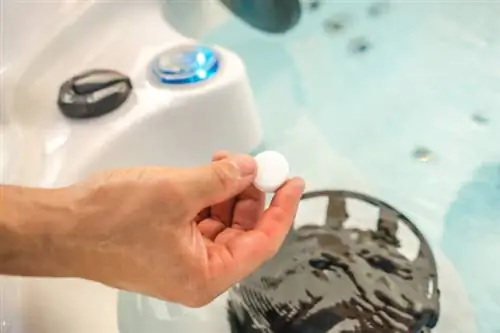
Tip:
It's worth taking a look at the concentration and therefore the dosage when making your selection. Products with a high concentration are particularly useful for larger pools, as a small amount is sufficient.
Dosage and chlorine content
The optimal chlorine content is between 0.5 and 1.0 milligrams per liter of pool water, but decreases continuously due to various influences. These include:
- entered or flown-in contamination
- higher temperatures
- UV radiation
The chlorine is used up by its disinfecting function and some of it evaporates. It can therefore make sense to achieve a slightly higher value during the initial chlorination. However, the potential danger is that if used too early, eyes, mucous membranes and respiratory tract will become irritated. Rash is also possible.
Step by step
In order to achieve the correct value during the initial chlorination, various steps are necessary.
- Completely clean and fill the pool.
- Calculate pool volume.
- Measure the pH value of the water.
- Calculate the amount of chlorine required.
- Depending on the manufacturer's instructions, dissolve chlorine or add it directly to water or skimmer.
- Distribute the agent in the pool.
- Measure the chlorine value and add more chlorine if necessary.
Measuring the pH value with an analyzer or test strip is important in order to create the optimal environment for the chlorine to work. The value should be between 7.0 and 7.4. If this is not the case, an adjustment can be made using appropriate means.
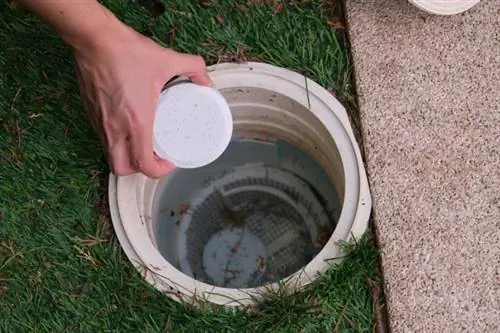
If you are unsure how many liters your pool holds, you can multiply the length, width and height together and get the important value.
Tip:
The initial chlorination should be carried out at least one day before using the pool for the first time. On the one hand, this allows the agent to be distributed more evenly. On the other hand, any excess that may be present can be reduced by the time you swim for the first time, which reduces the risk of irritation.
Frequently asked questions
Is shock chlorination after initial filling useful?
If the water is fresh and clean, it is usually not necessary to carry out shock chlorination. It is enough to aim for the optimal value of 0.5 or better 1.0 milligrams per liter. With the higher value selected, you can wait longer before the next chlorine dose, which reduces the effort.
When will further chlorine be administered after the initial chlorination?
This depends on various factors. Temperature, degree of utilization, performance of the pump and the amount of incoming or entrained dirt particles play crucial roles here. It is therefore important to test the chlorine content regularly and add the product as needed. A general indication of the time interval is not possible.
Is it absolutely necessary to add chlorine when filling for the first time?
Without the appropriate water care products, germs spread quickly in a pool. Streaky coatings on walls and floors, discoloration, cloudiness and unpleasant smells are the noticeable and unpleasant consequences. The contaminated water can also cause infections and pose other he alth risks. Chlorination is therefore recommended in any case.

